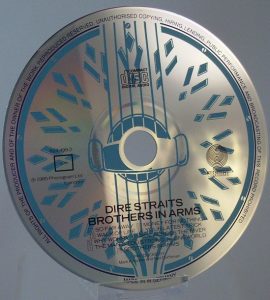History (1983): Compact Disc by Sony and Philips
Evolution of earlier LaserDisc format
This is a Press Release edited by StorageNewsletter.com on October 10, 2018 at 2:36 pmThis article was published by the Museum of Obsolete Media.
Compact Disc (1983-)

Compact Disc (Compact Disc Digital Audio or CD) is a digital optical disc format for audio playback, released commercially in Japan in late 1982 (followed by Europe in early 1983).
It developed out of work by Sony and Philips, and is an evolution of the earlier LaserDisc format.
The first standard (known as the Red Book CD-DA standard) was published in 1980.
Philips contributed the general manufacturing process, based on video LaserDisc technology.
The company also contributed eight-to-fourteen modulation (EFM), which offers a certain resilience to defects such as scratches and fingerprints, while Sony contributed the error-correction method, CIRC.
A standard CD has a diameter of 120 millimetres (4.7″) and can hold up to 74 or 80 minutes.
The initial capacity of 74 minutes was reportedly specified by Sony executive Norio Ohga so as to be able to contain the entirety of Beethoven’s Ninth Symphony on one disc.
A CD is 1.2 millimetres thick, and weighs 15-20 grams. Scanning velocity is approximately 500rpm at the inside of the disc, and approximately 200rpm at the outside edge (a disc played from beginning to end slows down during playback).
The first album to be released on CD was Billy Joel’s 52nd Street, which reached the market alongside Sony’s CDP-101 CD player on October 1 1982 in Japan.
The new audio disc was enthusiastically received, especially in the early-adopting classical music and audiophile communities, and as the price of players gradually came down, the CD began to gain popularity in the larger popular and rock music markets.
The first artist to sell a million copies on CD was Dire Straits, with the 1985 album Brothers in Arms.
By 1988, sales of albums on CD overtook those of the 12-inch LP.
The format was later developed to cover data storage (in the form of the CD-ROM), and recordable versions (CD-R and CD-RW).
With the advent and popularity of digital audio formats and players, sales of CDs began dropping in the 2000s but still sell greatly.












 Subscribe to our free daily newsletter
Subscribe to our free daily newsletter
